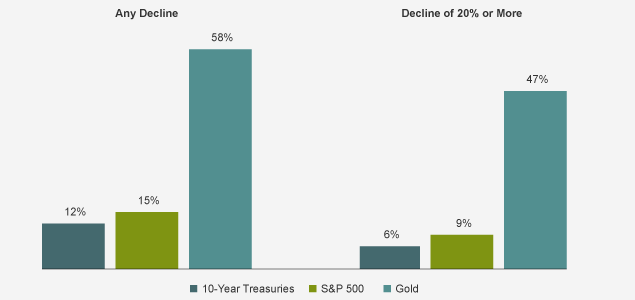What’s Safe?
October 17, 2011
It’s easy to understand why investors crave what they perceive as safety. The 2008 financial crisis is still a fresh memory, and the global economic recovery appears to be losing steam. But what investments are really safe?
Looking at the longer-term safety track record of various asset classes reveals some big surprises (Display 1). After adjusting for inflation, gold has delivered negative real returns in 58% of all rolling 10-year periods since 1971, far worse than stocks or bonds. Even more astonishing, gold’s purchasing power declined 20% or more in 47% (nearly half!) of all rolling 10-year periods.
Meanwhile, 10-year Treasuries have lost purchasing power in 12% of the 10-year periods since 1971, and in half of those cases, the loss in purchasing power was 20% or more.
Maintaining a balanced mix of stocks and bonds has provided somewhat better protection against drops in purchasing power over the long term than Treasuries, and far more protection than gold. Adding additional asset classes can provide even more protection.
As for the short term, our research suggests that dynamically adjusting the asset mix in reaction to changing market risk and return potential can significantly moderate risk for investors, without reducing long-term returns (as described in detail in another research paper Designing a Smoother Ride).
Gold Has Disappointed Far More Often than Equities
Frequency of Declining Real Returns
